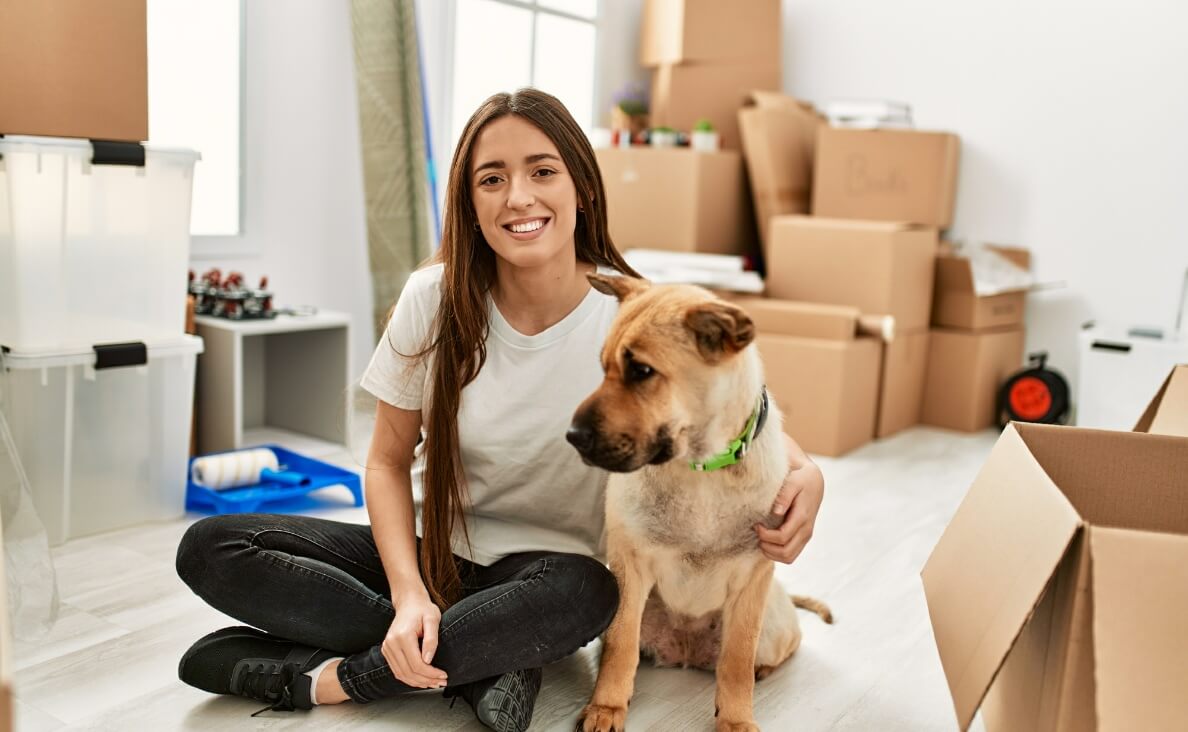
Moving to a new home can be an exciting yet stressful experience, not only for us but also for our furry family members. Dogs, being creatures of habit, can find the process of moving overwhelming and unsettling. However, with proper planning and care, you can make the transition smoother and less stressful for your beloved canine companion.
In today’s blog post, we will discuss some valuable tips to help you make moving with dogs easier, ensuring their comfort and well-being throughout the process.
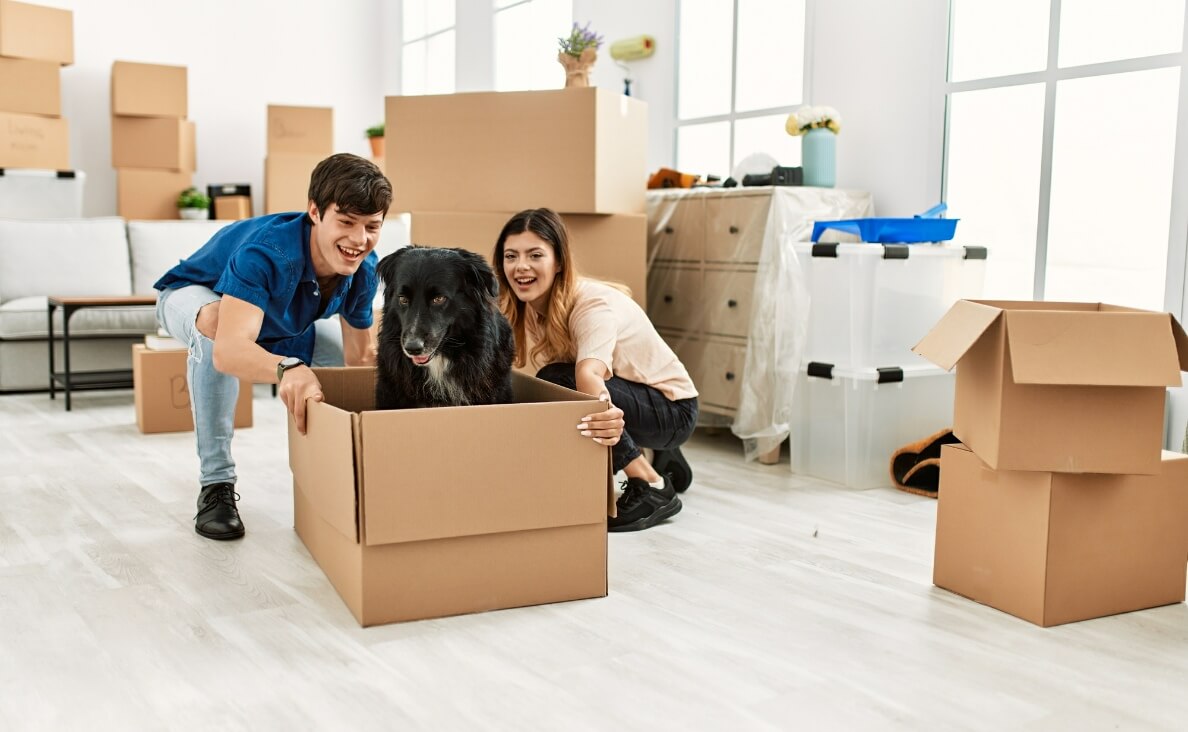
-
Stick to Routine
Dogs thrive on routine, and maintaining their familiar schedule during the moving process can provide them with a sense of security. Stick to their regular feeding, exercise, and walking routine as much as possible. This consistency will help them feel more at ease despite the changing environment.
-
Create a Safe Space
Set up a designated safe space for your dog in both your current home and the new residence. This area should be familiar to them and filled with their favorite toys, bedding, and belongings. Having a safe space allows them to retreat and relax when they feel overwhelmed by the moving activities. In the new home, ensure the safe space is set up before your dog arrives, so they have an immediate sense of comfort and security.
-
Update Identification Information and Request Your Dog’s Vet History
Before the move, make sure your dog’s identification tags and microchip information are updated with your new contact details. In the chaos of moving, there’s always a risk of pets getting lost. By ensuring their identification is current, you increase the chances of a safe and speedy reunion if your dog happens to wander off during the transition.
Before you leave, be sure to request your dog’s full vet history and print it out before you leave (especially if you have a dog who has had a major surgery). You will want to carry a hard copy with you while you travel and you can then provide your new vet with your dog’s medical records.
Be sure to ask when your dog last received key vaccines (i.e. rabies, canine distemper, adenovirus-2, parvovirus-DAPP and parainfluenza virus) and when they’re due again. Other vaccines such as bordatella bronchiseptica may be required if your dog will be boarding or enrolled in daycare.
Also, make sure you refill any preventative and other medications, if necessary. To be safe, it’s usually a good idea to get any refills taken care of before you move, so you’re not scrambling last minute if there are any issues getting your dog settled with a new vet.
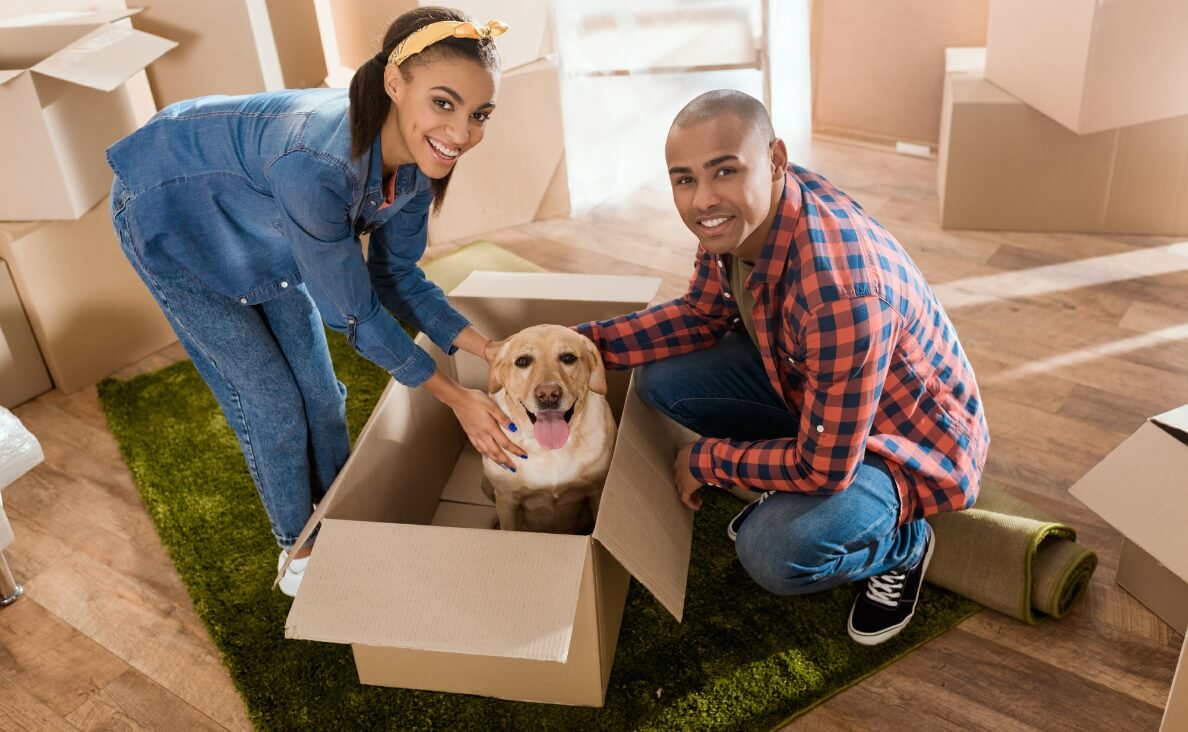
-
Familiarize Your Dog with the New Home
If possible, introduce your dog to the new home gradually before the actual move. Take them for short visits, allowing them to explore and become familiar with the space. Bring along their bedding or toys to create a sense of familiarity. This gradual exposure can help ease their anxiety and make the transition less overwhelming.
-
Maintain a Calm Environment
Moving can be a chaotic and stressful time, but it’s important to maintain a calm and positive environment for your dog. Dogs are sensitive to our emotions, so try to remain calm and composed, even if you’re feeling overwhelmed. Avoid loud noises, excessive commotion, or too many unfamiliar people in your dog’s presence. This will help them feel more secure and reduce their stress levels.
-
Pack Your Dog’s Essentials Separately
When packing your belongings, set aside a separate box or bag for your dog’s essentials. This should include their food, treats, medication, bowls, leash, toys, bedding, and any other items they may need immediately upon arrival at the new home. Having these items easily accessible will ensure your dog’s comfort and help you avoid rummaging through boxes to find their necessities.
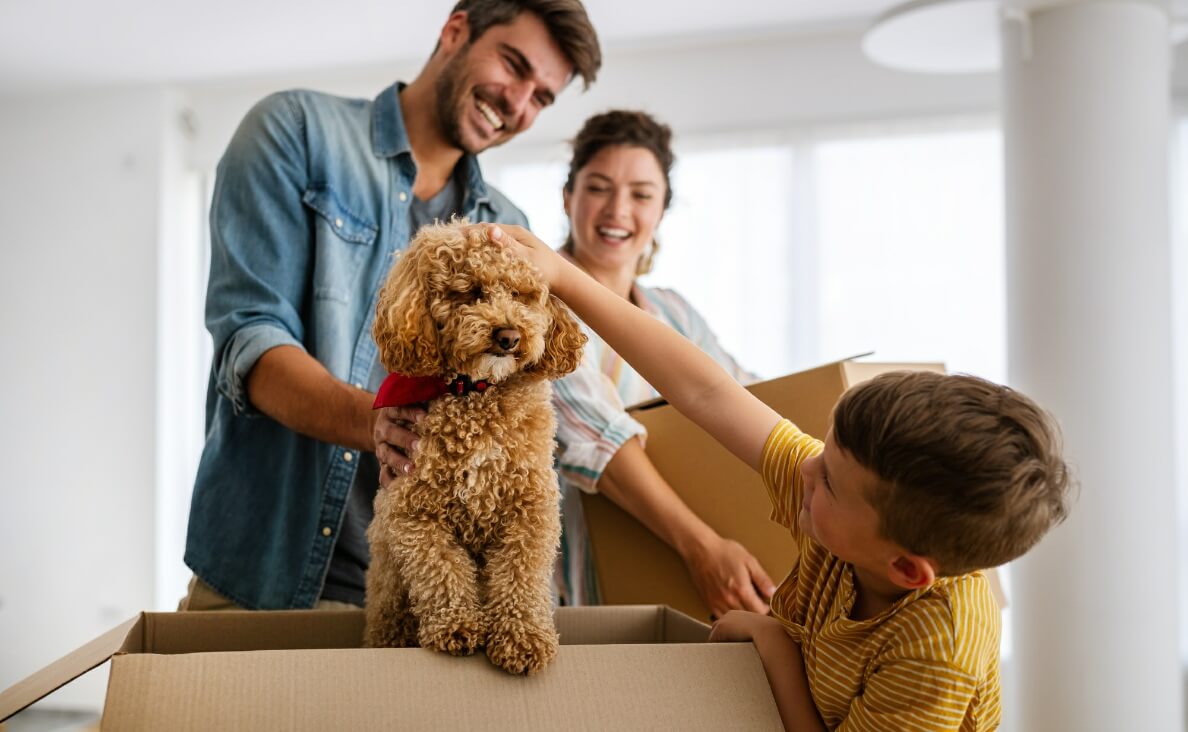
-
Consider Dog Daycare or Boarding
On the actual moving day, it might be beneficial to arrange for your dog to stay at Canine Campus. This will keep them away from the chaos and potential hazards of the moving process. It also allows you to focus on the move without worrying about your dog’s safety. Alternatively, you can ask a friend or family member to look after your dog temporarily during the most hectic stages of the move.
-
Gradual Transition to the New Home
Once you have settled into your new home, it’s essential to gradually introduce your dog to their new surroundings. Start by confining them to a smaller area or a single room and gradually expand their access to the rest of the house. This gradual transition will help them feel more comfortable and prevent them from feeling overwhelmed by the new environment.
-
Explore the Neighborhood Together
Take your dog on frequent walks around the new neighborhood to help them become familiar with their surroundings. This will provide them with mental stimulation and help them adjust to the new sights, sounds, and smells. It’s also an excellent opportunity for you to bond with your dog and establish a routine in the new area.
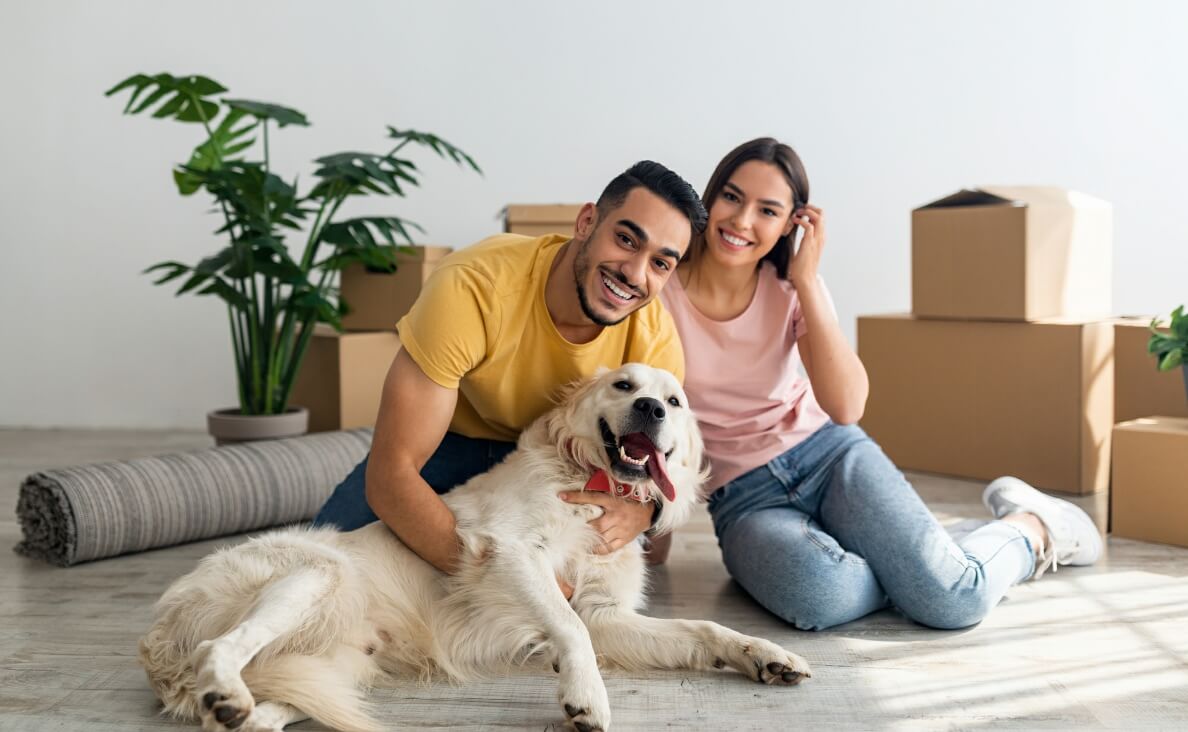
-
Show Extra Love and Attention
During the moving process and the adjustment period afterward, your dog may need some extra love and attention. Spend quality time with them, engage in their favorite activities, and offer plenty of praise and rewards for their good behavior. Reassure them with gentle words and physical affection, reinforcing the idea that they are safe and loved in their new home.
Moving can be a stressful experience for both humans and dogs alike. However, with careful planning, patience, and consideration for your dog’s well-being, you can make the transition easier and more comfortable. By maintaining routines, creating safe spaces, and providing extra love and attention, you can help your fur buddy adjust to their new home and settle in smoothly. Remember, your dog’s comfort and happiness are paramount, and taking these steps will ensure they feel secure and supported throughout the moving process.
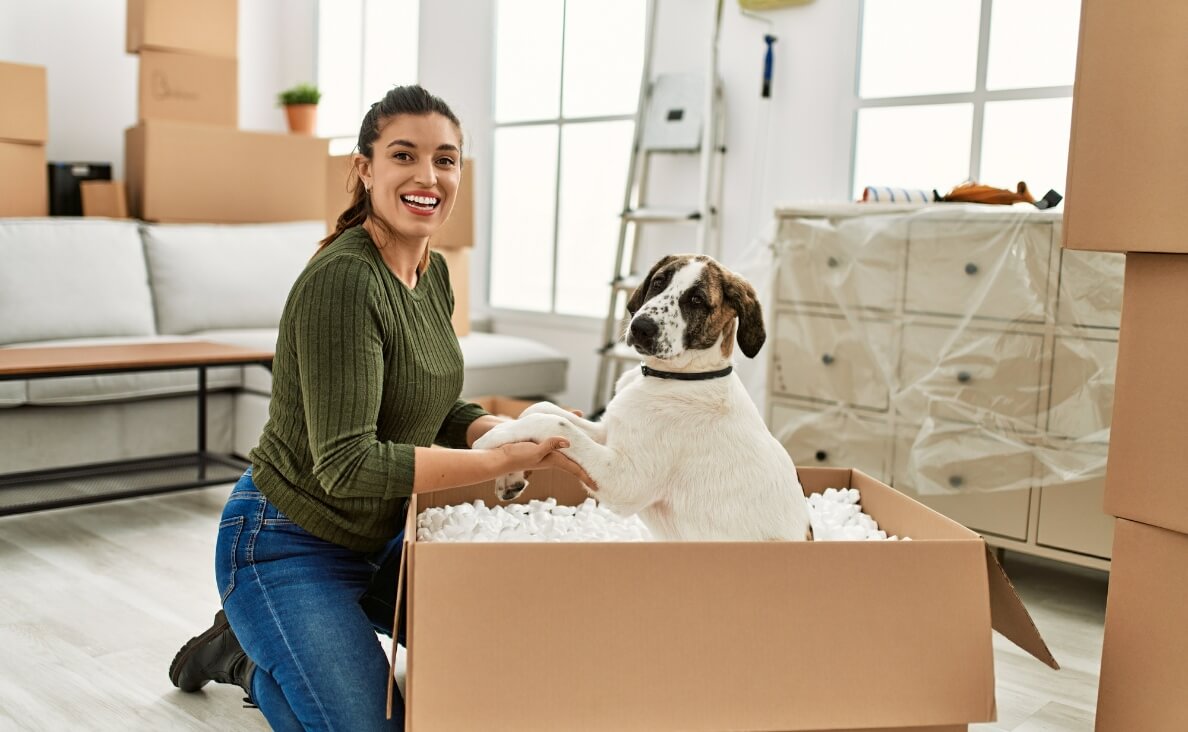
How have you made your dog’s transition to a new home easier? Please share in the comments below…

 7 Ways to Help Calm Your Dog During a Thunderstorm
7 Ways to Help Calm Your Dog During a Thunderstorm What You Need to Know About Pain Medication for Dogs
What You Need to Know About Pain Medication for Dogs 10 Ways to Keep Your Dog Safe During the Fourth of July
10 Ways to Keep Your Dog Safe During the Fourth of July 10 Project Toys to Keep Your Dog Busy During Thanksgiving Dinner (or Anytime Your Dog is Bored)
10 Project Toys to Keep Your Dog Busy During Thanksgiving Dinner (or Anytime Your Dog is Bored) Does Your Dog Have Back to School Separation Anxiety?
Does Your Dog Have Back to School Separation Anxiety?






Thank you for sharing these insightful tips on making a move smoother for our furry companions. It’s often easy to forget how unsettling changes can be for them, considering they thrive on routines. I particularly appreciate the reminder to update identification and vet details – such an essential step that might easily be overlooked amidst the chaos of moving. These suggestions not only ensure the physical well-being of our dogs but also address their emotional needs, which is so crucial. Will definitely be keeping this in mind for our upcoming move. Thanks again!
I’m so glad you enjoyed the blog post and found it helpful! Thank you for visiting the Canine Campus blog – hope to see you back again soon. And good luck with your move!